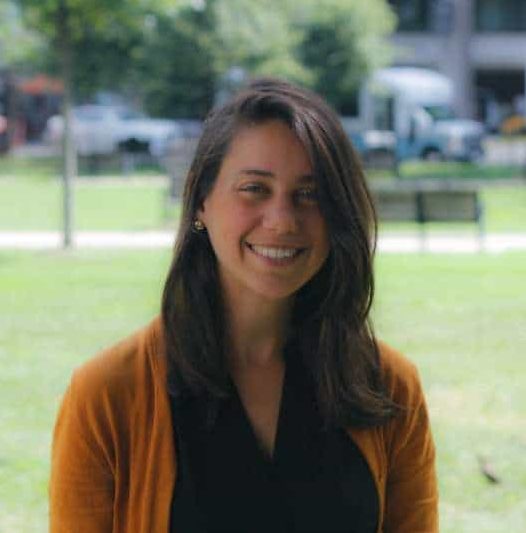Introduction
For most of 2019, we’ve been investigating natural disasters, particularly those that science shows are intensified by the planet’s warming. We now have data you can use as a guide to look for impacts.
Here’s the backstory: We wanted to know who’s being affected by these extreme weather events. People with fewer resources and less political power have a harder time recovering from disasters. But we discovered that publicly available data providing details on disaster victims is limited.
So, we set off to find answers to related questions: What were the demographics of people living in areas struck by disasters? And how do these communities compare with the rest of the United States?
You can access our data here, along with our findings and data dictionary. We and our partners at other news organizations — the Atlanta Journal-Constitution, High Country News, Ohio Valley ReSource and StateImpact Oklahoma — used this data to understand trends and home in on stories for our new “One Disaster Away” series. You can use it to find stories, too. If you’re not a reporter, you might find it helpful for research, local disaster preparation or other purposes.
Here’s how we built our dataset:
Working with Christopher Emrich, a University of Central Florida professor, we identified some key demographics often linked to difficulty preparing for, surviving or recovering from extreme weather events — measures of so-called “social vulnerability.” We merged that information, pulled from census data, with federally declared major disaster areas — typically counties — from 2009 through 2018.
That allowed us to determine whether each affected area in the past 10 years had larger shares than the U.S. overall of children under 5 years old; people 65 and older; renters; people of color (including Hispanic and Latino individuals); unemployed workers; and households reliant on federal food aid. We also looked at a seventh measure, typical household incomes below that of the U.S.
This data is intended to be a starting point. It can’t, for example, tell you what portions of a county a disaster hit or how much damage it caused. And while the vulnerability factors are helpful, they’re not the final word about the challenges people face.
Among our findings:
- Nearly 90 percent of counties, independent cities, tribal reservations and other areas in the U.S. were hit by at least one federally declared major disaster in the past 10 years.
- In most of those years, more than half of disaster zones had higher proportions of households relying on food aid than the country overall.
- Hundreds of disaster zones look more vulnerable than the U.S. overall by at least five of our seven measures. More than 760 such places were struck by at least one major disaster in the past decade, comprising about a quarter of all disaster zones. Most of those places, about 660, were hit more than once.
Getting to the story: A New Jersey example
We harnessed this data to identify story ideas. Here’s how that worked when we looked more closely at Essex County, New Jersey:
The county, home to the city of Newark, was one of the 660 vulnerable areas with multiple federally declared disasters over the past decade, largely for hurricanes, severe downpours and snowstorms.
Superstorm Sandy in 2012 was a big one. Essex wasn’t where the storm did the most damage. But community advocates in Newark — which has a poverty rate twice the national average — told us there had still been significant impacts.
Add a disaster to “communities that are already suffering and already vulnerable and … it just puts people in a much more dire situation,” said Ana Baptista, chair of the environmental policy and sustainability management program at The New School in New York. We heard about flooded basements and food ruined by power outages in cash-strapped households that could not afford those hits.
What really troubled advocates in Essex: They couldn’t get basic information about local disaster plans that could help them determine whether the area was better prepared for the next extreme weather event.

For example, even now, people in Newark’s Ironbound neighborhood and South Ward aren’t sure how to evacuate during a disaster, according to two nonprofit groups, the Ironbound Community Corp. and Clean Water Action. Employees of both organizations said they’d been in discussions with Newark officials after Sandy about updating evacuation routes or better marking existing ones, but conversations stalled years ago.
So, we investigated.
First, we reached out to both the city and the county governments. Neither responded to multiple messages.
Then we filed public records requests for local emergency response plans and evacuation routes. The county gave us nothing, saying it had “no records responsive” to the request for plans.
Newark declined to provide its response plan and its evacuation routes, citing homeland security concerns — even though evacuation routes do the public no good if they’re kept secret. We pushed back. The city agreed to release the documents.
What we received in late October is here, along with our records requests and related government responses.
Given another opportunity to comment, Newark again didn’t respond. Essex did. Capt. Edward Esposito, who helps run the county’s Office of Emergency Management, said the area has a response plan but doesn’t release it due to a homeland security-related state executive order.
Julian Coltre, a county sheriff spokesman, said Essex works to protect all its residents and has programs specifically aimed at helping some of the most vulnerable, like the homeless, during disasters.
“We’re open to thoughts and ideas on how to make ourselves better,” Coltre said.
Community advocates say feedback is difficult to give if they don’t know what the plans are — a problem they say they have had with Newark. They’re worried about local disaster readiness.
“We could be changing all sorts of things, but we’re not,” said Maria Lopez-Nunez, director of environmental justice and community development for the Ironbound Community Corp. “We’re just waiting for a disaster to say, ‘Oh, that’s really terrible,’ and then we’re going to go into this whole cycle again.”
Want additional resources?
- For a deeper look at the social vulnerability of your area at a census tract level, check out the Vulnerability Map website.
- For more federal disaster data, including certain types of disaster aid, look at what the Federal Emergency Management Agency has posted here. (Also check out our story about Small Business Administration disaster assistance loans, which includes a link to the underlying data.)
- For additional climate change resources about extreme weather in your state, options include this federal summary of current and expected impacts; reports on climate-linked weather events compiled by the Georgetown Climate Center; and state-by-state fact sheets prepared by the Environmental Protection Agency (from 2016, but still helpful).
Some questions you can ask to find stories
- What factors that could magnify the effects of disasters (e.g. unemployment, high proportions of renters) are most common in my state? How does that compare to other places? Does my state or local government have plans in place to help?
- Which places have been struck most often by disasters? How severely were they hit? You can look at National Weather Service data or state and local emergency response records to get a fuller picture.
- Do the places that were hit have local resources — from storm shelters to emergency responders — to handle disasters and their aftermaths? If not, what’s missing?
Questions about our data? Contact Rachel Leven at rleven@publicintegrity.org and Joe Yerardi at jyerardi@publicintegrity.org.



Join the conversation
Show Comments
An amazing job of research and a very interesting pattern.